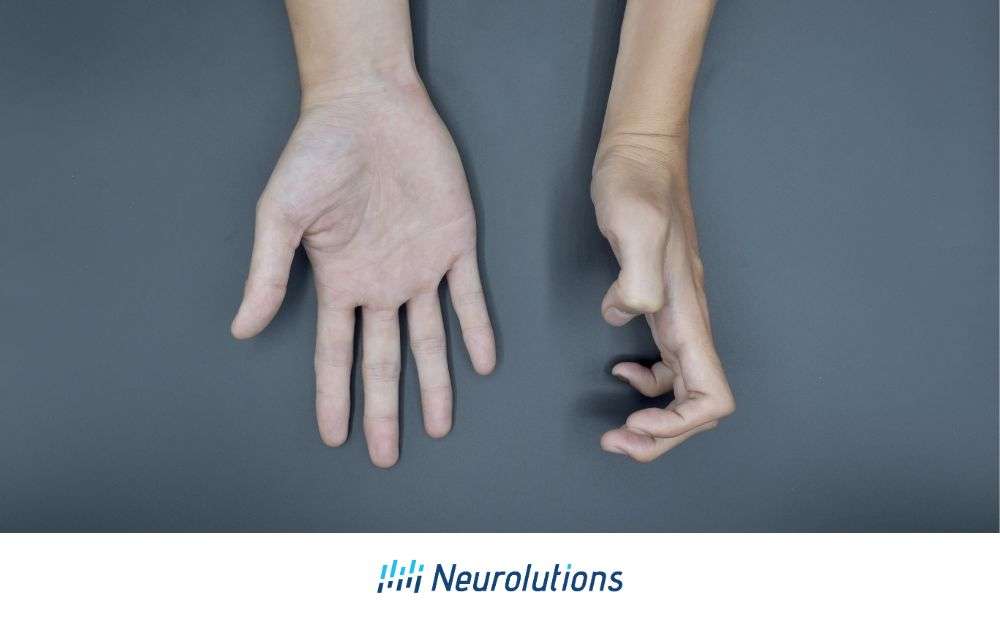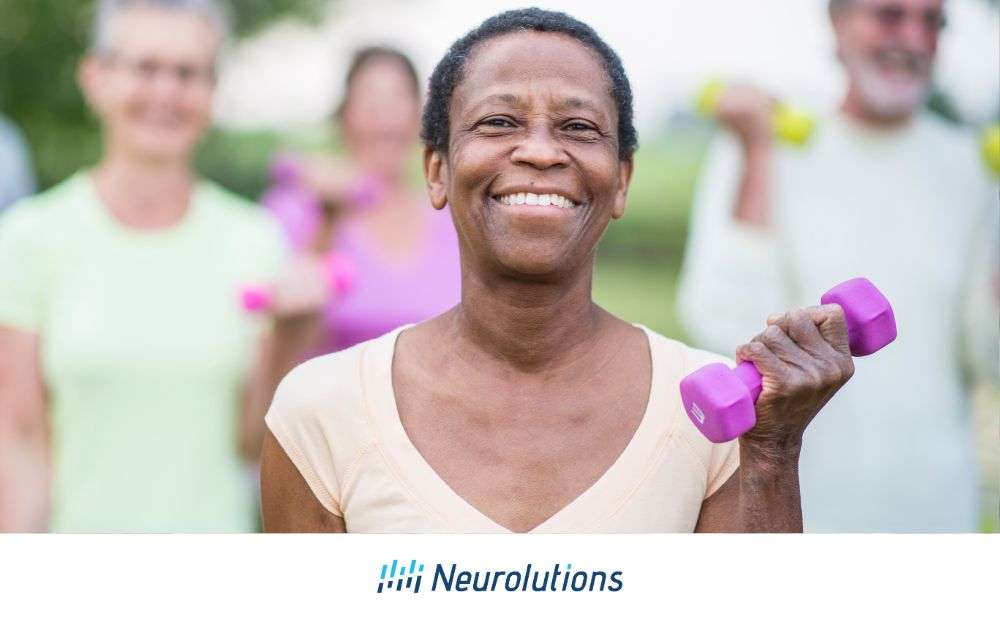Strokes, known as cerebrovascular accidents (CVA), occur when blood flow in part of the brain is interrupted, denying brain tissue oxygen and nutrients. Damage to or death of brain cells can occur within minutes of such an event. There is a wide range of effects on stroke survivors based on where the stroke occurred and how much damage occurred to brain tissue. Some survivors will completely recover, but almost 2/3 have some sort of disability. Deficits can range from mild one-sided weakness to severe impairments affecting vision, language, or the ability to walk on your own. If you or a loved one has had a stroke, it can be very overwhelming and confusing. There are some common roadblocks you may face following a stroke that can make it even more difficult to focus on your rehabilitation journey. This article discusses possible roadblocks and suggestions to help overcome these roadblocks following a stroke.
The 5 Most Common Roadblocks You’ll Face Post-Stroke
Finding the right services:
If the stroke survivor has been hospitalized, most likely you were assisted with what is called “discharge disposition” and guided to the next phase in rehabilitation and recovery. The team may suggest inpatient, outpatient, or home rehabilitation, or no rehabilitation at all. If the stroke was not severe enough to warrant hospitalization, you may not have guidance on the next steps to cope with psychological and physical stressors that are highly prevalent- even in the case of a “minor” stroke. It can be difficult to find neurorehabilitation and psychological specialty services, especially if you live in a rural area. There are many clinics that address rehabilitation for common impairments such as a torn rotator cuff or knee replacement. However, clinics are far and few in between that serve clients who have a stroke. Having access to proper neurorehabilitation services is imperative to recovery.
Limitations in function or ability:
You may have noticed a change in the stroke survivors’ ability to complete tasks for themselves due to defects that they have experienced post-stroke. It may now be difficult to not complete previously simple daily tasks or activities such as cooking, driving, or returning to work. This can be very discouraging and lead to changes in daily routine, in turn leading to change in role and need for caregiving or services post-stroke.
Change in emotions or feeling down:
Due to changes in daily functioning and changes that occur in brain function following a stroke, depression or feelings of “being down” can be persistent and common. Although this is a very common occurrence following a stroke, this can be very difficult to overcome and impact your daily life and rehabilitation journey.
Limitations in insurance coverage:
No matter your insurance, unfortunately, coverage can dictate all aspects of stroke care from hospitalization to medications to therapy. This can be incredibly frustrating and sometimes harmful to your recovery. For example, when seeking outpatient therapy, some clinics may not be in network, or you may be limited to a certain number of visits per therapy discipline. If unable to receive needed services, how is one to focus on getting better and returning to previous routines?
Transportation and caregiving:
After experiencing a stroke, the survivor may be unable to take care of themselves in tasks such as bathing and dressing or may have limited ability to complete things such as driving themselves to the store for groceries or taking themselves to medical appointments. This can be a large life change that requires partial or full-time caregiving in many different forms.
How to Overcome Roadblocks That You’re Facing
Finding the right services:
If you have not been provided with support services from a local care team, it can be confusing and difficult to find services. There are national references that can help.
- Find a PT Tool – The American Physical Therapy Association
- Rehab Therapy After a Stroke – American Stroke Association
You can also reach out to your local hospital system to inquire about local services and referrals. If you do have a selection of multiple places around the area that offer rehabilitation services for stroke, it is highly recommended that you ask for a tour and interview several facilities prior to enrolling. Most insurance companies only allow one covered evaluation per calendar year, per condition, and/or episode of care. If you start in a place that ends up not being right for you, it is possible it will be not only a hassle to change therapy centers but may end up costing you out-of-pocket for a new evaluation. Questions to ask the facility that may shed insight are as follows: How long is your waitlist? Do you see your patients 1:1 or multiple patients in one hour? How long is a typical session (minutes)? What is a typical length of care for stroke survivors? What resources and technology do you use at your facility?
Limitations in function or ability:
Being unable to care for oneself or complete previous life roles is often the largest change post-stroke. It is important to be your own advocate whether you are a stroke survivor or caregiver. If able to express your needs, tell your care team what you want and what you need. It is best to have a role in the decision-making process, if able. Obtaining necessary medical equipment or adaptive equipment can also be crucial to increasing independence in the home and completing tasks safely, increasing daily partition in self-care and transfers. Seeking rehabilitation services to meet your goals and help the stroke survivor achieve greater functional independence is an important piece to returning to previous life roles. The rehabilitation can also help refer to other services along the way such as vocational rehabilitation or driving evaluations to help make the stroke survivors and loved ones transition back to high-level activities post-rehabilitation services.
Change in emotions or feeling down:
Speak with someone you trust about how you are feeling. This does not have to be a member of your care team at the beginning, it can just be helpful to talk about what you are going through and all the changes in your life. A family member or friend may be able to provide you emotional support or offer helpful suggestions. If you are still not feeling better, please talk to your doctor or a member of your healthcare team for medication management and supportive services such as seeing a therapist or joining a support group.
Limitations in insurance coverage:
This can be a highly limiting factor. It can be very helpful to call your insurance prior to setting up further services. A case manager can be assigned to you through your insurance who is an advocate for the survivor. They can help you find services that are available and also explain your policies. It is very helpful to determine what therapies are covered and for how many sessions. Medicare and Medicaid have incredibly different rules compared to private insurance. Please seek support from either your insurance case manager or a case manager at your medical facility to help with this.
Transportation and caregiving:
This can be one of the most difficult “pieces of the puzzle” to solve post-stroke. If the survivor is unable to take care of themselves, it may be difficult to decide on what type of support they need and how best to provide this. The case manager from the hospital or insurance may have resources available which may be covered, or partially covered to assist with transportation or caregiving. It is helpful to know your choices prior to attempting to decide everything for yourself. Talking with friends and family about taking turns or setting up a rotational schedule can lessen burnout for caregiving as well. Sometimes stroke survivors and their families may opt to spend some extra time at a skilled nursing facility or assisted care to allow for more rehabilitation and time for healing prior to coming home. Choices may be limited or vast. However, it is important to find what works best for you and your family. We will continue to write about how articles support caregivers, if you, please learn more here.
Conclusion: Tips for Living a Better Life Post-Stroke
Living after a stroke can be full of roadblocks, but also very full of newfound joys and experiences. This article is meant to help support you and your family to help “navigate the system” and advocate for yourself or a loved one. Do not give up. Roadblocks will continue in life, but finding new pathways around the traffic jam are always possible.




